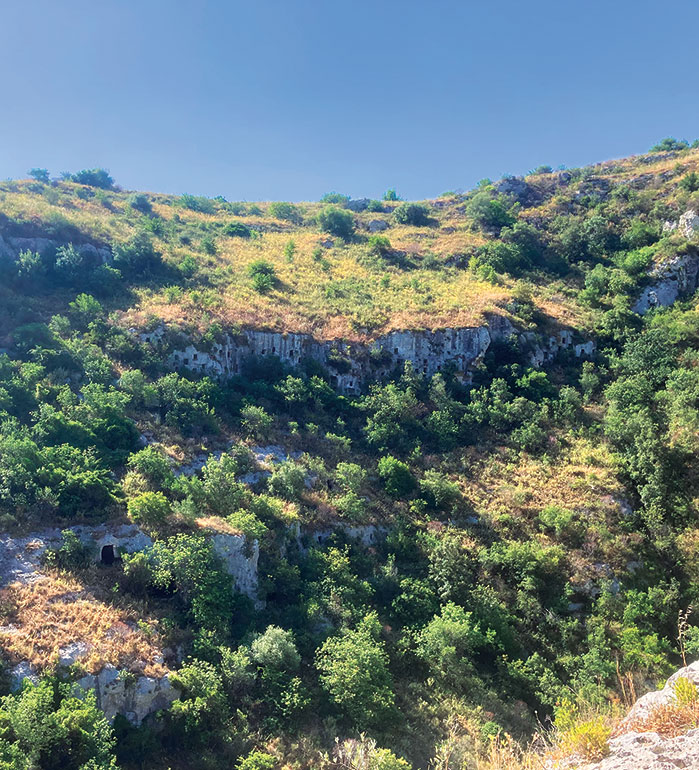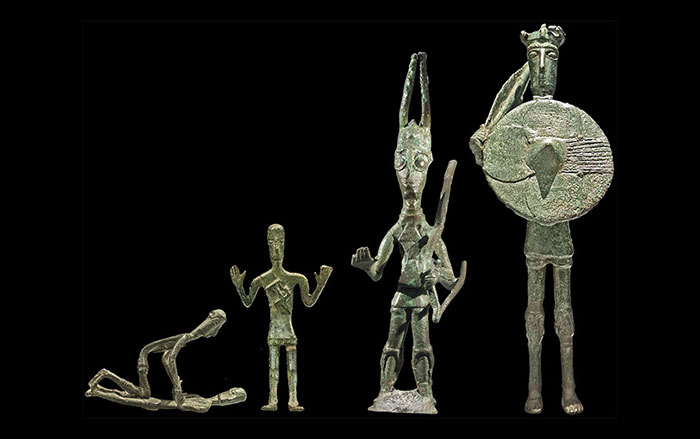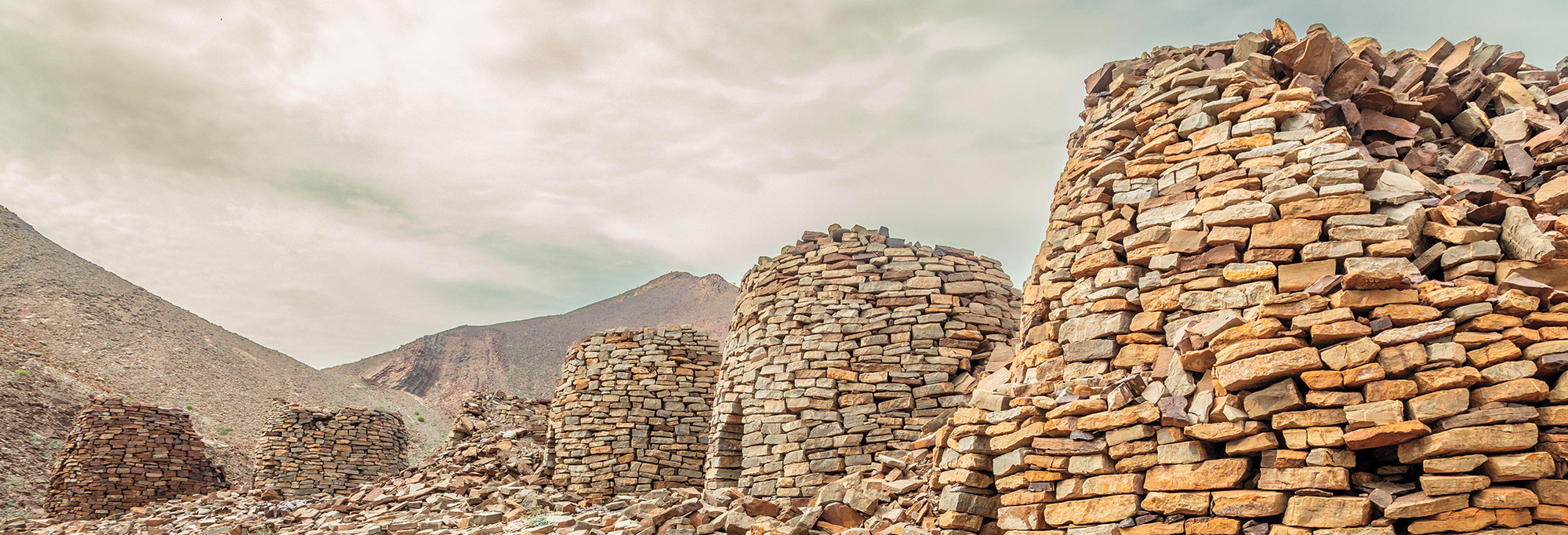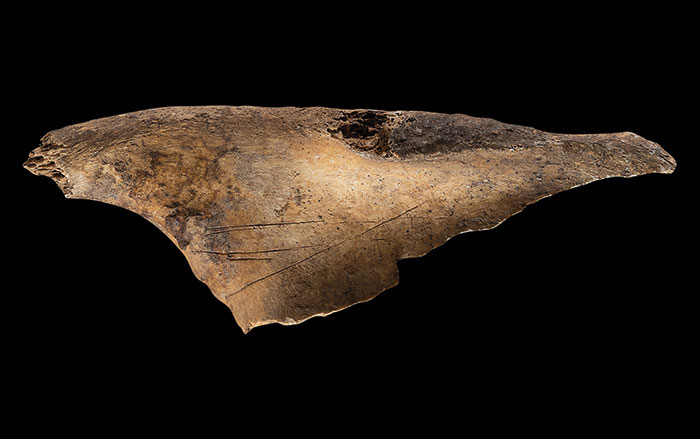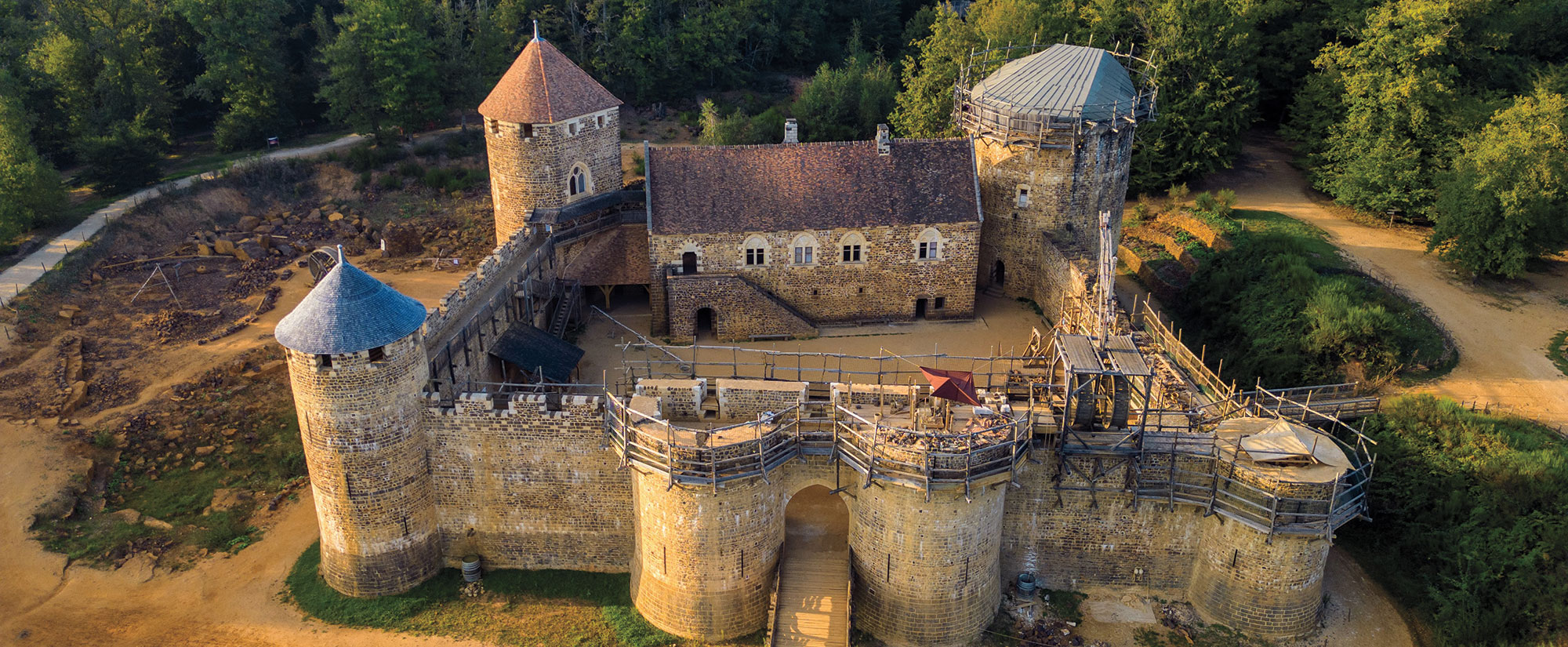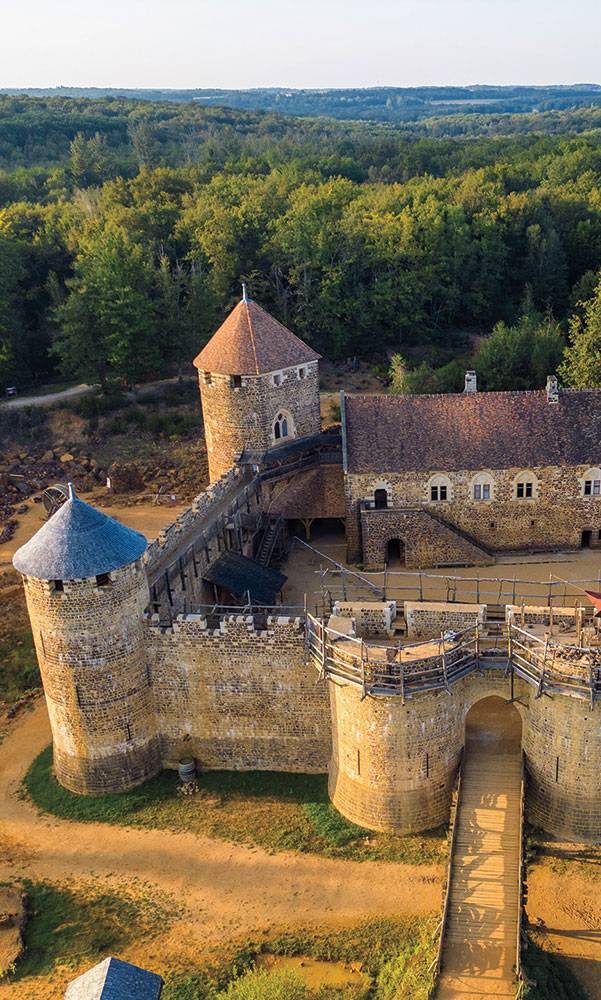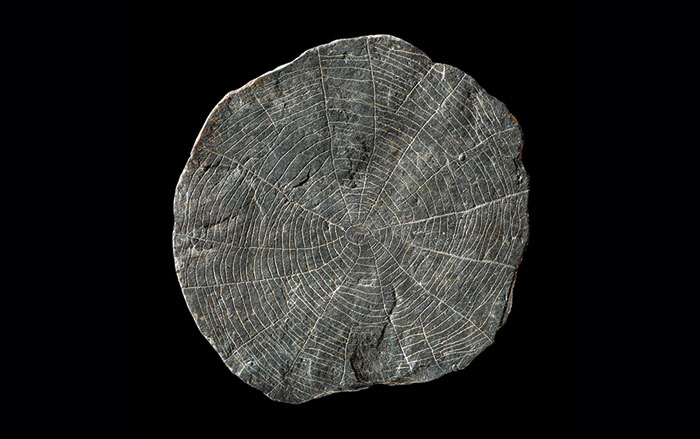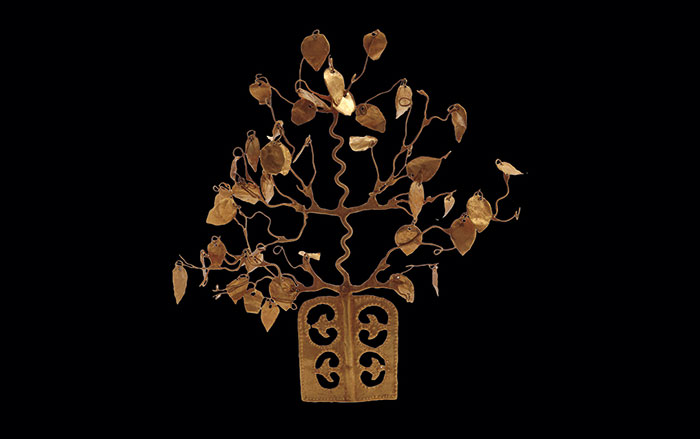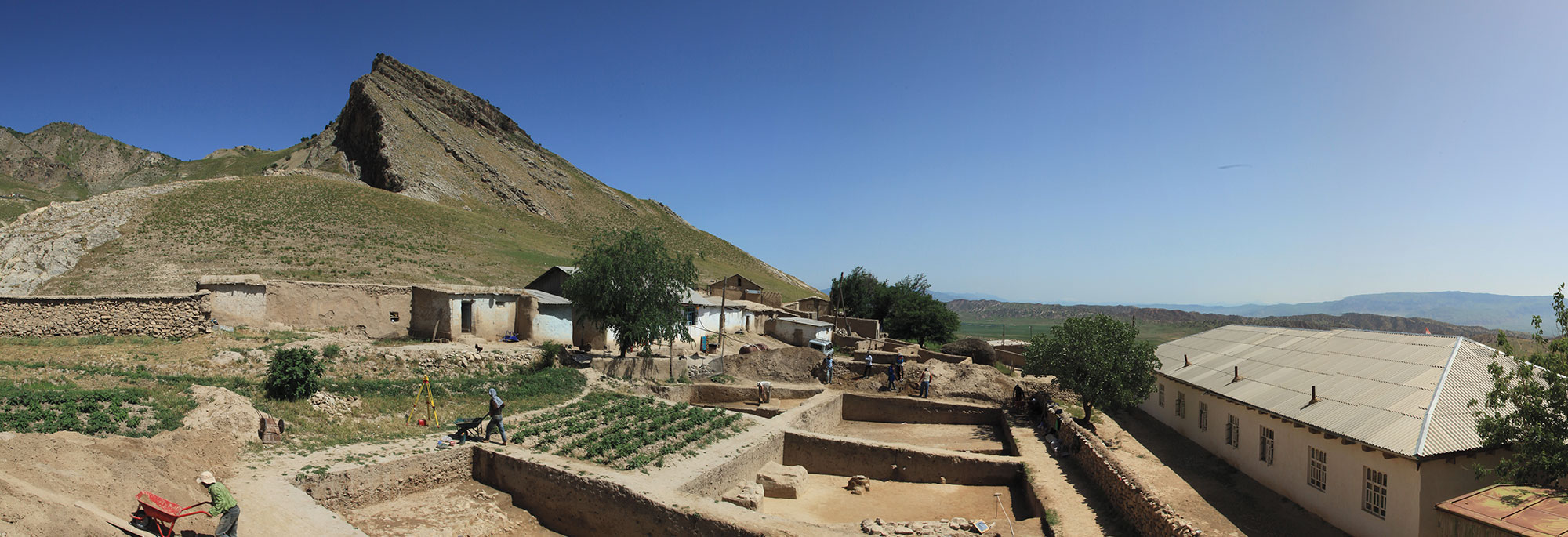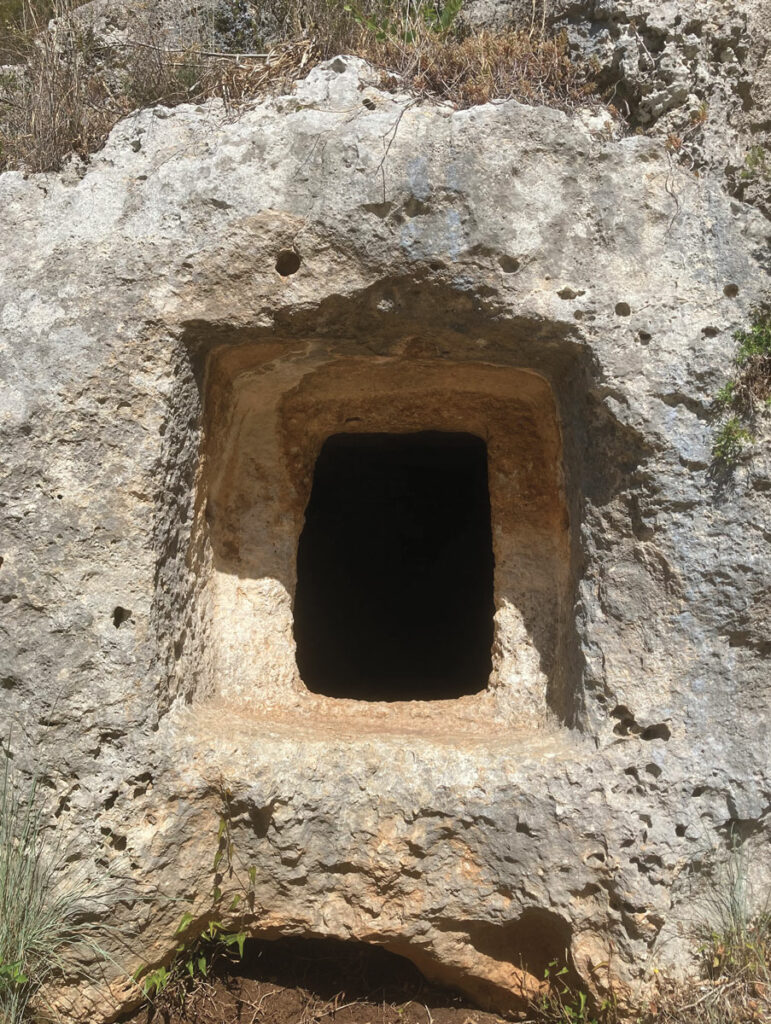
Roughly 14 miles from the ancient city of Syracuse in southeastern Sicily, more than 4,000 tombs were carefully cut into the walls of a limestone gorge. The tombs make up the Necropolis of Pantalica, which was likely built by a local chiefdom in Sicily’s Late Bronze Age (ca. 1300–950 b.c.). The site continued to be used after the Greeks colonized southeastern Sicily in the eighth century b.c., through to the medieval period. However, according to archaeologist Robert Leighton of the University of Edinburgh, new tombs don’t seem to have been cut after 500 b.c.
The dramatic cliffside necropolis was used predominantly between the thirteenth and seventh centuries b.c. The tombs are interspersed with the occasional rock-cut dwelling, which date to the seventh century b.c. and were modified in later centuries. “These chambers have been amplified over time,” says Leighton. “Some are reworkings of prehistoric tombs that were expanded to be big enough to stand up and walk around in. Throughout the centuries, farmers have used them to house donkeys and to store hay.”
THE SITE
The Necropolis of Pantalica is situated between the modern cities of Sortino and Ferla and can be accessed from either. From Sortino, a narrow path rambles down steep cliffs into a verdant nature reserve containing holm oaks, wild sage, thyme, giant fennel, and plane trees, as well as foxes, porcupines, hares, kingfishers, peregrine falcons, and butterflies.

First excavated between 1895 and 1910 by archaeologist Paolo Orsi, the necropolis was later investigated by archaeologist Luigi Bernabò Brea in the 1960s. Orsi discovered three small rock-cut chapels adorned with frescoes, which were likely once used by hermits or small monastic communities. The site’s most notable structure is called the Anaktoron. Located at the top of a hill, this multiroom building was once thought to date to the Bronze Age. Later, it was found to contain sixth- or seventh-century a.d. roof tiles and determined to be a Byzantine farmhouse.
Other finds include distinctive red burnished ceramics, such as pedestal vases, which were thrown on a potter’s wheel. These vessels suggest contact with Greece in the twelfth century b.c. Rings, brooches, daggers, and mirrors resemble similar artifacts from Bronze Age Greece and Cyprus. Wine jugs with painted geometric motifs indicate contact with Greek settlers. “Burial goods change from 700 to 500 b.c.,” says Leighton. “At that point, they’re interacting with Syracuse and the coastal colonies, importing pottery, and adopting Greek styles.”

WHILE YOU’RE THERE
An hour east of the Necropolis of Pantalica by car, along roads that wind through small Sicilian hill towns before reaching highways leading to the coast, is the site of Syracuse. Founded by Greek settlers from the city of Corinth in 733 b.c., Sicily’s second Greek colony was described by the first-century b.c. Roman author Cicero as the “greatest Greek city and the most beautiful of all.” The site contains the ruins of a Greek theater, a Greek fort, a Roman amphitheater, and the fifth-century b.c. Temple of Athena, which later served as a cathedral. Visitors can see many of the artifacts excavated in the necropolis at the Paolo Orsi Regional Archaeological Museum.



